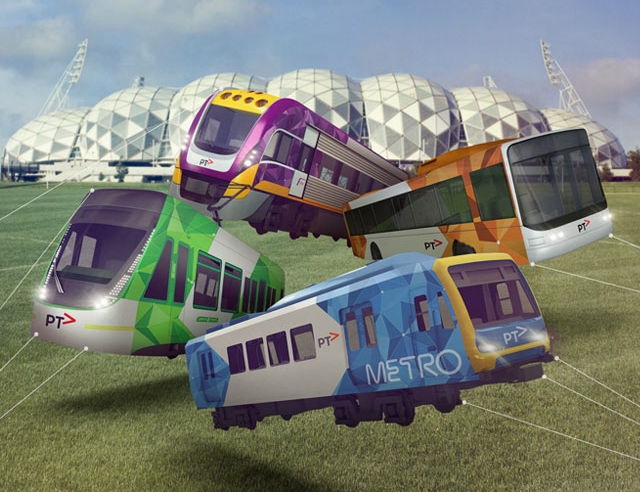Tuesday 10 April
It was 6:50am when I arrived at my local Syndal station. Normally, at this early time of day I can find a parking space within the multi-storey car park, but for some reason it was completely full!
Even the outside car park was full without a single vacant spot.
Now, I had not planned for this eventuality because my car petrol tank was down to empty with an estimated range of about 10km… My original plan was to park at my local station and refuel after work.
Now, without the possibility of parking at Syndal, I decided my immediate next priority would be to refuel my car, which I then proceeded to do. Old habits die hard – for the last 5-6 years, I have been a regular customer at Brandon Park Coles Express. This has partly been justifiable because of my car lease which included a Shell Fuel Card. Using pre-tax dollars to pay for fuel has been a nice $50~60 fortnightly benefit. Annually, this arrangement has worked out to $1200~1300! Even with my car lease ending recently, in this hour of need, my default answer to get fuel was Brandon Park. Fortunately Syndal to Brandon Park is a local commute against the relative city-bound direction of most people.
With a car with a full tank of petrol, the early morning thinking for next default in terms of alternate train station was Clayton station. So, as it was early morning, I automatically drove towards Clayton. It was only after a second thought that I realized that Clayton as a backup was not an optimal choice.
During the April school holidays the media has been repeatedly reminding us of all the disruptions to public transport. Clayton, as part of the wider Dandenong Sky Rail Project is currently going through its period of construction. Replacement buses were adding an additional 30-60 minutes to the travel time.
As I slowly passed Monash University, realizing the extra travel time, I came to the realization that all these delays would make for a total 1.5~2 hours of travel time into work. Given this, I made a final decision to drive into work… and thus, Melbourne’s public transport failed me.
Wednesday 11 April
Public transport is designed around activity hub destinations. The latest news announced by the State Government to build a tram line extension from Caulfield to Monash Clayton via Chadstone is a live example of this thinking. For commuters, we plan our travel based on where we want to end up. Frequently on Wednesday’s I end up at church (Clayton) after work. Unfortunately, as mentioned above, the Dandenong Skyrail program means that getting to Clayton comes at a delay and additional inconvenience of traveling via replacement buses.
There has also been a flow-on effect to the system during this period where the Dandenong line is experiencing delays. This effect is seen in the faster filling up of other train station car parks, which is what I experienced on Tuesday morning. This is why my going to my local station at a usual time now is not good enough if I am to get parking! Given the experience of Tuesday morning, I resolved to park this time at East Malvern station, given it is a reasonable station to target on the Glen Waverley line – from this station I will then drive the remaining route to Clayton.
Arriving and parking at East Malvern station was uneventful, and I alighted the 6:53am city-bound train. Nowadays the Glen Waverley line runs by default direct to Flinders Street station so all commuters after a City Loop destination tend to transfer at Burnley or Richmond stations. This morning, seeing a train arriving on the other platform prompted me to hop off the direct train in the hope of having a quick connection to the City Loop train. Having left the train, I and other commuters realised that the other train was not actually stopping at Burnley. However, being Burnley station, another train was due to arrive a few minutes later. When this next train arrived, I boarded the train and resumed listening to my playlist.
At Richmond, I did not realise that the train I had boarded was no longer a city loop bound train… my realisation only came a few moments later when the train continued onwards to Flinders Street, remaining at ground level rather than switch to the tunnel entrance bound for Parliament. Upon arriving at Flinders Street station, I initially disembarked from the train and started walking towards the Swanston Street end of the station/platform. Checking the platform information screens as a walked, I quickly realised that this same train I had been on was now a Glen Waverley bound train which would return to Richmond station. Given this information, I decided I would ride the train back to Richmond where I could then transfer to a train destined to traverse the city loop. Wasting a few more minutes, I eventually was able to sojourn out the Parliament station Collins St exit just after 7:30am. Having picked up some food, I then walked north through the lane-ways to the north-east corner of the CBD.
Arriving at work ~ 7:50am indicates I had spent over an hour commuting to work. Comparing the two days, this door-to-door experience was definitely shorter but still much longer than usual. In the past, a door-to-door / end-to-end travel from home to work would be ~50min.
Overall Thoughts
Part of my experience was shaped by my lack of action or missing the signs. However, it is quite common for trains to be rerouted and even at busy Finders Street station for platform changes to occur. It reminds me of one time when overseas visitors had ventured into the city. Attempting to return to Glen Waverley, they hopped in a train based on the platform screen signage, not seeing or realising the train itself read Belgrave/Lilydale. As visitors from out of town, they blissfully sat down as the train trundled off through the underground city loop before heading out to the Eastern side of Melbourne. They only realised the train was not the right train by the time they had reached Box Hill station and all the station names were unfamiliar to them. Eventually, they disembarked the train at Mitcham station where I instructed them to wait for me to come and pick them up. Fortunately, driving to Mitcham station was a “quick” 20-minute commute, and we were able to laugh off the experience.
The ‘plan B’ alternative to driving to Mitcham and getting picked up would have been to take an inbound train back to Burnley and change to the Glen Waverley line. This kind of trip would take an hour; 30-min inbound and then another 30-min outbound. For completeness in this comparison, two buses (737 and 742) via Vermont can connect commuters between the two stations for a total travel time of… 40 minutes.
Melbourne’s transport system is built around the city. This is reflected in the main train network being radial and all lines lead to the CBD. The tram network caters mainly for the inner city suburbs, and shares the grid road infrastructure. In recent decades, the tram network has been extended – with route 75 along the Burwood Highway reaching out to the outer suburb of Vermont.
Read more in my commentary on the 2018 proposal for a Caulfield – Chadstone – Monash Uni – Rowville tram line.


You must be logged in to post a comment.